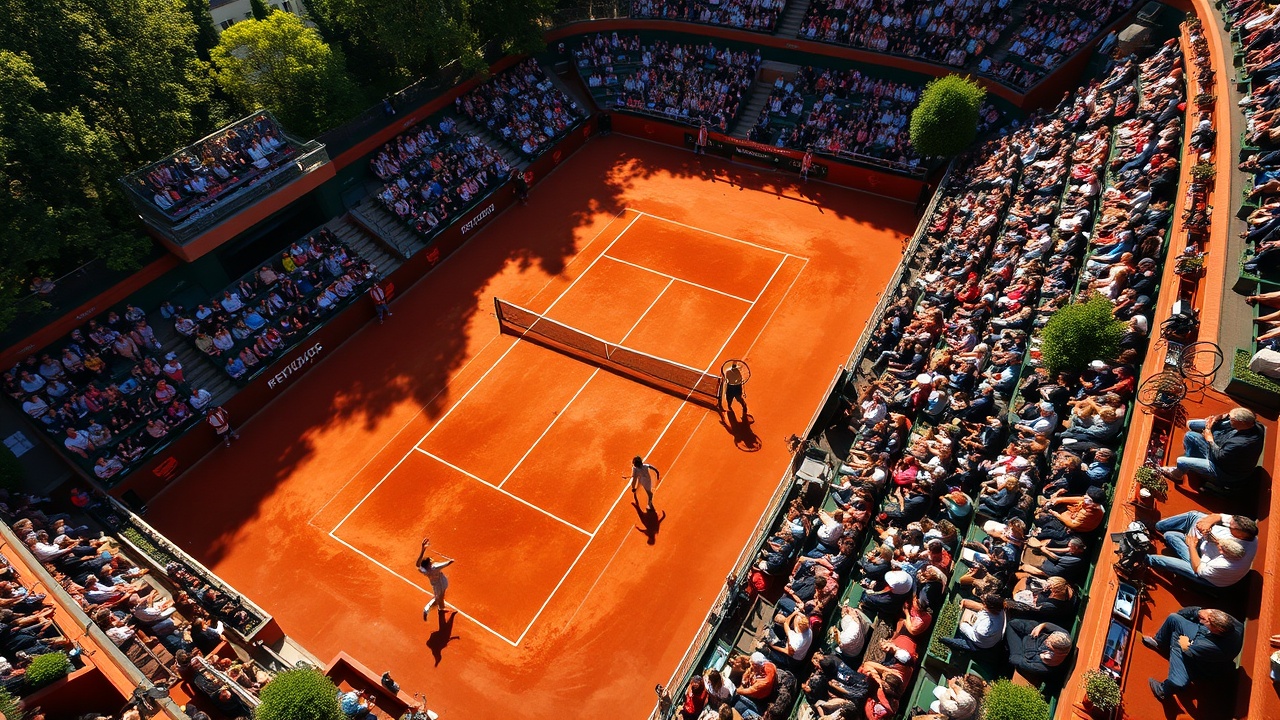The French Open: A Prelude to an Exciting Conclusion
As the conclusion of the French Open approaches, the excitement is palpable in Paris. World No. 1 Aryna Sabalenka triumphed over defending champion Iga Świątek, securing her place in the women’s final where she will face American rising star Coco Gauff, who recently halted the impressive run of Lois Boisson. In the men’s competition, Carlos Alcaraz has advanced to the final after defeating Lorenzo Musetti, setting the stage for a showdown against Novak Djokovic, who will take on the top-ranked Jannik Sinner. Fans can look forward to an exhilarating weekend on the iconic red clay of Roland Garros.
History and Unique Playing Conditions
The French Open boasts a rich history, originating in 1891 as the “French Clay-Court Championships,” which was exclusively for domestic players. It evolved into an international event in 1925, inviting competitors from all around the globe. The tournament was named after the illustrious aviation pioneer Roland Garros, who tragically lost his life during World War I, following the construction of a new stadium in his honor for France’s defense team in the 1927 Davis Cup.
Part of the allure of the French Open stems from its unique playing conditions; it is the only Grand Slam event hosted on clay. Contrary to common belief, these clay courts consist of only a thin layer of crushed brick, around 1-2 millimeters thick, to impart their distinctive red appearance. Competing on clay differs significantly from hard and grass surfaces, as the slower nature of the clay promotes prolonged rallies and a more demanding physical game. It often leads to matches being likened to strategic chess games, with players needing to plan several shots ahead.
“It’s a very demanding surface,”
Novak Djokovic acknowledged following his recent triumph on clay after completing a “Golden Slam”.
This year, the ATP has scheduled 18 clay tournaments, while the WTA will host 11, indicating the importance of this surface during the season.
Equality in Prize Money
Ensuring equality in prize money remains a significant aspect of the tournament. While some smaller events may still favor male winners in payouts, all Grand Slam tournaments, including the French Open since 2006, provide equal remuneration for male and female champions. This movement toward equality in pay began with the US Open in 1973, with Wimbledon following suit a year later.
Legends of the Game and Cultural Vibrancy
Historically, Rafael Nadal stands out as the most successful player on this surface, with 14 wins at Roland Garros and a total of 22 Grand Slam titles before retiring from professional play in late 2024. As the tournament progresses, questions arise: Can anyone match Nadal’s remarkable record on clay?
Moreover, Roland Garros differs from other Grand Slams not just in surface but also in its vibrant culture. Known as the fashion capital, Paris brings a flair to player attire; for instance, Zheng Qinwen turned heads with a modern twist on Suzanne Lenglen’s classic design. Celebrities are also drawn to the event, from musician Pharrell Williams to actor Ben Stiller, enhancing the electric atmosphere.
The crowds at Roland Garros are notoriously energetic, often participating in rhythmic chants that resonate throughout the stadium, creating a unique experience for both players and spectators.
The Final Showdown: Looking Ahead
This weekend promises to crown a new champion in the women’s bracket—will it be Sabalenka or Gauff? On the men’s side, can Alcaraz secure back-to-back titles like his idol Nadal did, or will Sinner clinch his first title, or Djokovic extend his record? Whatever the outcome, this year’s French Open is shaping up to be unforgettable.




